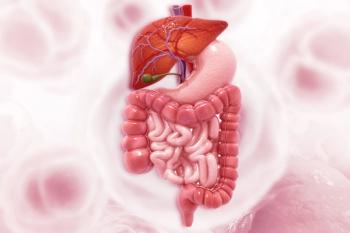
Proton Chemoradiotherapy May Be Associated with Reduced Adverse Events
These results could present an opportunity to broaden inclusion criteria on clinical trials and intensify chemoradiotherapy treatments.
In an analysis carried out by JAMA Oncology, proton chemoradiotherapy compared with photon chemoradiotherapy was associated with significantly reduced acute adverse events (AEs) that caused unplanned hospitalizations, with similar disease-free survival (DFS) and overall survival (OS).1
Reduced AEs associated with proton therapy could present an opportunity to intensify chemoradiotherapy treatments and/or extend inclusion criteria on clinical trials to include older, sicker patients.
“With our aging population, this could have a big impact on a lot of patients,” Brian C. Baumann, MD, assistant professor of radiation oncology at the Washington University School of Medicine and adjunct assistant professor of radiation oncology at the University of Pennsylvania Perelman School of Medicine, said in a press release.2 “To me, that’s an exciting implication in this research.”
Among the retrospective cohort of 1,483 patients, 391 patients received proton therapy and 1,092 received photon therapy. Those receiving proton therapy were significantly older (median age, 66 years [range, 18-93] vs 61 years [range, 19-91]; P < .01), had less favorable Charlson-Deyo comorbidity scores (median, 3.0 vs 2.0; P < .01), and had lower integral radiation dose to tissues outside the target (mean [SD] volume, 14.1 [6.4] vs 19.1 [10.6] cGy/cc x 107; P < .01).
Between the 2 therapies, baseline grade ≥2 toxicity (22% vs 24%; P = .37) and ECOG performance status (mean [SD], 0.62 [0.74] vs 0.68 [0.80]; P = .16) were similar. In propensity score weighted-analyses, proton chemoradiotherapy was associated with a significantly lower relative risk of 90-day AEs of at least grade 3 (RR, 0.31; 95% CI, 0.15-0.66; P = .002), 90-day AEs of at least grade 2 (RR, 0.78; 95% CI, 0.65-0.93; P = .006), and decline in performance status during treatment (RR, 0.51; 95% CI, 0.37-0.71; P < .001). There was no difference in DFS or OS.
“We observed significantly fewer unplanned hospitalizations in the proton therapy group, which suggests the treatment may be better for patients and, perhaps, less taxing on the healthcare system,” Baumann said. “If proton therapy can reduce hospitalizations, that has a real impact on improving quality of life for both our patients and their caregivers.”
Additionally, the researchers noted that the lower observed toxicity of proton therapy offers an opportunity to explore clinical trials combining proton therapy with intensified systemic therapy and/or dose-escalated radiotherapy which could, in turn, improve survival outcomes. Moreover, proton therapy may allow older patients with more comorbidities to receive the most effective combined-modality treatments.
In an editorial commentary, Henry S. Park, MD, MPH, and James B. Yu, MD, MHS, from the Yale School of Medicine, wrote that “the evidence needed to truly justify the expenses of proton therapy for these patients will need to come from phase III randomized clinical trials” given that “the data from these prospective studies has been mixed so far.”3
This study is the first large review of data across several cancer types, including lung, brain, head and neck, gastrointestinal, and gynecologic cancers. None of the patients had metastatic cancer.
Some of these findings were presented in June at the American Society of Clinical Oncology’s (ASCO) annual meeting in Chicago.
References:
1. Baumann BC, Mitra N, Harton JG, et al. Comparative Effectiveness of Proton vs Photon Therapy as Part of Concurrent Chemoradiotherapy for Locally Advanced Cancer. JAMA Oncology. doi:10.1001/jamaoncol.2019.4889.
2. Proton Therapy as Effective as Standard Radiation with Fewer Side Effects [news release]. St. Louis, Missouri. Published December 27, 2019. newswise.com/articles/proton-therapy-as-effective-as-standard-radiation-with-fewer-side-effects?sc=dwhr&xy=10019792. Accessed January 2, 2020.
3. Park SH, Yu JB. Proton-Based Chemoradiotherapy-What Level of Evidence Is Necessary to Justify Its Widespread Use? JAMA Oncology. doi:10.1001/jamaoncol.2019.4875.
Newsletter
Stay up to date on recent advances in the multidisciplinary approach to cancer.

















































































